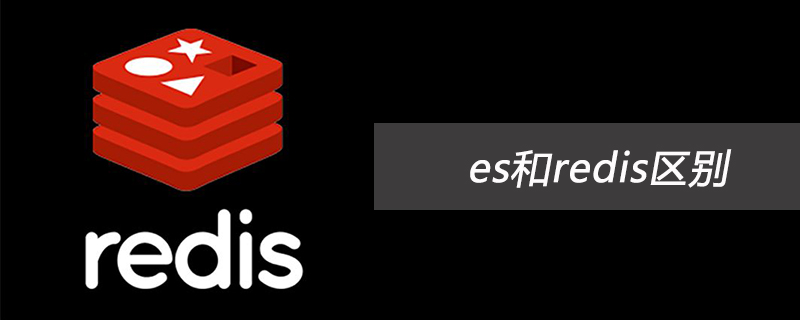1. Foreword
As we all know, one of the bottlenecks of computers is IO. In order to solve the problem of mismatch between memory and disk speed, cache is generated to put some hot data in the memory for use at any time. Take it at will, reduce the request connection to the database, and prevent the database from hanging. It should be noted that whether it is breakdown or the penetration and avalanche mentioned later, it is all under the premise of high concurrency, such as when a certain hot key in the cache fails.

2. Cause of the problem
There are two main reasons:
1. Key expired;
2. Key is eliminated by page replacement.
For the first reason, in Redis, Key has an expiration time. If the key expires at a certain moment (if the mall is doing activities, starting at zero o'clock), then after zero o'clock, a certain key will expire. All product query requests will be pressed onto the database, causing the database to collapse.
For the second reason, because the memory is limited, new data must be cached all the time and old data must be eliminated. Therefore, in a certain page replacement strategy (illustration of common page replacement algorithms), data must be eliminated , if no one cares about certain products before the event, they will definitely be eliminated.
3. Processing ideas for dealing with breakdown
The normal processing request is as shown in the figure:

Since key expiration is inevitable, high When traffic comes to Redis, according to the single-threaded characteristics of Redis, it can be considered that tasks are executed sequentially in the queue. When the request reaches Redis and finds that the Key has expired, an operation is performed: setting a lock.
The process is roughly as follows:
The request reaches Redis, and it is found that the Redis Key has expired. Check whether there is a lock. If there is no lock, return to the back of the queue.
Set the lock. Note that this should be setnx(), not set(), because other threads may have set the lock.
Get the lock, take When the lock is reached, go to the database to fetch the data, and release the lock after the request returns.

# But it raises a new question. What if the request to get the data hangs after getting the lock? That is, the lock is not released. Other processes are waiting for the lock. The solution is:
Set an expiration time for the lock. If it reaches the expiration time and has not been released, it will be automatically released. The problem comes again. It is easy to say that the lock is hung, but if it is a lock What about timeout? That is, the data is not retrieved within the set time, but the lock expires. The common idea is that the lock expiration time value increases, but it is unreliable because the first request may timeout. If the subsequent request It also times out. After multiple timeouts in a row, the lock expiration time value is bound to be extremely large. This has too many disadvantages.
Another idea is to start another thread and monitor it. If the thread fetching data does not hang up, appropriately delay the expiration time of the lock.

4. Penetration
The main reason for penetration is that many requests are accessing data that does not exist in the database. For example, a mall selling books has been requested. To query tea products, since Redis cache is mainly used to cache hot data, data that does not exist in the database cannot be cached. This abnormal traffic will directly reach the database and return "none" query results.
To deal with this kind of request, the solution is to add a layer of filters to the access request, such as Bloom filter, enhanced Bloom filter, and cuckoo filter.

In addition to Bloom filters, you can add some parameter checks. For example, database data IDs are generally increasing. If you request a parameter such as id = -10, it will inevitably be bypassed. Redis, to avoid this situation, can perform operations such as user authenticity verification.
5. Avalanche
Avalanche is similar to breakdown. The difference is that breakdown means that a hotspot key fails at a certain moment, while avalanche means that a large number of hotspot keys fail in an instant. There are many hotspot keys on the network. Blogs are emphasizing that the strategy to solve the avalanche is to randomize the expiration time. This is very inaccurate. For example, when a bank is doing activities, the interest coefficient was 2% before, but after zero point, the coefficient is changed to 3%. This situation can change the user's interest rate. Will the corresponding key be changed to expire randomly? If past data is used, it is called dirty data.
Obviously not possible, save money too f0c;You save 3 million in interest until the end of the year, and the next door only has 2 million, there is no need to fight, just kidding~
The correct idea is, first of all, you must look at Check whether the key expiration is related to time. If it is not related to time, it can be solved by random expiration time.
If it is related to time point, for example, the bank just mentioned changes a certain coefficient on a certain day, then a strong dependency breakdown solution must be used. The strategy is to update all keys with the past thread first.

While updating the hotspot key in the background, the business layer delays the incoming requests, such as briefly sleeping for a few milliseconds or seconds, to spread the pressure on subsequent hotspot key updates. .
The above is the detailed content of What causes Redis breakdown avalanche and how to solve it. For more information, please follow other related articles on the PHP Chinese website!
 es和redis区别Jul 06, 2019 pm 01:45 PM
es和redis区别Jul 06, 2019 pm 01:45 PMRedis是现在最热门的key-value数据库,Redis的最大特点是key-value存储所带来的简单和高性能;相较于MongoDB和Redis,晚一年发布的ES可能知名度要低一些,ES的特点是搜索,ES是围绕搜索设计的。
 一起来聊聊Redis有什么优势和特点May 16, 2022 pm 06:04 PM
一起来聊聊Redis有什么优势和特点May 16, 2022 pm 06:04 PM本篇文章给大家带来了关于redis的相关知识,其中主要介绍了关于redis的一些优势和特点,Redis 是一个开源的使用ANSI C语言编写、遵守 BSD 协议、支持网络、可基于内存、分布式存储数据库,下面一起来看一下,希望对大家有帮助。
 实例详解Redis Cluster集群收缩主从节点Apr 21, 2022 pm 06:23 PM
实例详解Redis Cluster集群收缩主从节点Apr 21, 2022 pm 06:23 PM本篇文章给大家带来了关于redis的相关知识,其中主要介绍了Redis Cluster集群收缩主从节点的相关问题,包括了Cluster集群收缩概念、将6390主节点从集群中收缩、验证数据迁移过程是否导致数据异常等,希望对大家有帮助。
 Redis实现排行榜及相同积分按时间排序功能的实现Aug 22, 2022 pm 05:51 PM
Redis实现排行榜及相同积分按时间排序功能的实现Aug 22, 2022 pm 05:51 PM本篇文章给大家带来了关于redis的相关知识,其中主要介绍了Redis实现排行榜及相同积分按时间排序,本文通过实例代码给大家介绍的非常详细,对大家的学习或工作具有一定的参考借鉴价值,希望对大家有帮助。
 详细解析Redis中命令的原子性Jun 01, 2022 am 11:58 AM
详细解析Redis中命令的原子性Jun 01, 2022 am 11:58 AM本篇文章给大家带来了关于redis的相关知识,其中主要介绍了关于原子操作中命令原子性的相关问题,包括了处理并发的方案、编程模型、多IO线程以及单命令的相关内容,下面一起看一下,希望对大家有帮助。
 一文搞懂redis的bitmapApr 27, 2022 pm 07:48 PM
一文搞懂redis的bitmapApr 27, 2022 pm 07:48 PM本篇文章给大家带来了关于redis的相关知识,其中主要介绍了bitmap问题,Redis 为我们提供了位图这一数据结构,位图数据结构其实并不是一个全新的玩意,我们可以简单的认为就是个数组,只是里面的内容只能为0或1而已,希望对大家有帮助。
 实例详解Redis实现排行榜及相同积分按时间排序功能的实现Aug 26, 2022 pm 02:09 PM
实例详解Redis实现排行榜及相同积分按时间排序功能的实现Aug 26, 2022 pm 02:09 PM本篇文章给大家带来了关于redis的相关知识,其中主要介绍了Redis实现排行榜及相同积分按时间排序,本文通过实例代码给大家介绍的非常详细,下面一起来看一下,希望对大家有帮助。
 一起聊聊Redis实现秒杀的问题May 27, 2022 am 11:40 AM
一起聊聊Redis实现秒杀的问题May 27, 2022 am 11:40 AM本篇文章给大家带来了关于redis的相关知识,其中主要介绍了关于实现秒杀的相关内容,包括了秒杀逻辑、存在的链接超时、超卖和库存遗留的问题,下面一起来看一下,希望对大家有帮助。


Hot AI Tools

Undresser.AI Undress
AI-powered app for creating realistic nude photos

AI Clothes Remover
Online AI tool for removing clothes from photos.

Undress AI Tool
Undress images for free

Clothoff.io
AI clothes remover

AI Hentai Generator
Generate AI Hentai for free.

Hot Article

Hot Tools

MinGW - Minimalist GNU for Windows
This project is in the process of being migrated to osdn.net/projects/mingw, you can continue to follow us there. MinGW: A native Windows port of the GNU Compiler Collection (GCC), freely distributable import libraries and header files for building native Windows applications; includes extensions to the MSVC runtime to support C99 functionality. All MinGW software can run on 64-bit Windows platforms.

DVWA
Damn Vulnerable Web App (DVWA) is a PHP/MySQL web application that is very vulnerable. Its main goals are to be an aid for security professionals to test their skills and tools in a legal environment, to help web developers better understand the process of securing web applications, and to help teachers/students teach/learn in a classroom environment Web application security. The goal of DVWA is to practice some of the most common web vulnerabilities through a simple and straightforward interface, with varying degrees of difficulty. Please note that this software

Atom editor mac version download
The most popular open source editor

VSCode Windows 64-bit Download
A free and powerful IDE editor launched by Microsoft

Dreamweaver CS6
Visual web development tools







